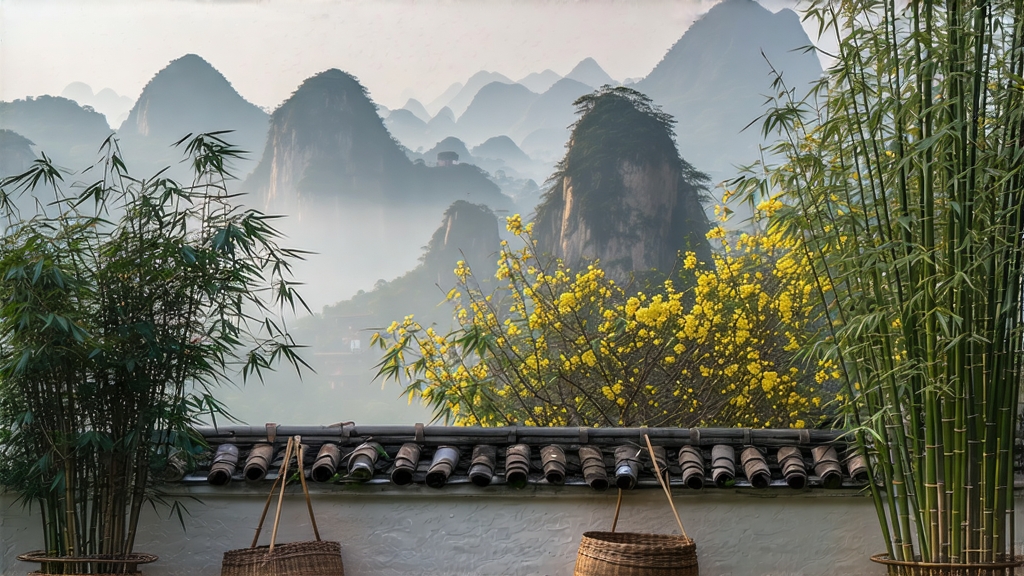
Tucked high in the mist-veiled Dabie Mountains of western Anhui Province, a tea once reserved for emperors quietly continues a 2,000-year dialogue between leaf and fire. Huoshan Huangya—literally “yellow bud of Huoshan”—is the least-known yet most aristocratic member of China’s six great tea families. While green tea races to preserve every trace of spring and pu-erh meditates for decades in dark caves, yellow tea pauses halfway, surrendering its chlorophyll to a whispered breath of smoldering charcoal and a blanket of steamed rice straw. The result is a liquor the color of old ivory, a fragrance that drifts between fresh chestnut and baked pumpkin, and a sweetness that arrives only after you swallow. For the international drinker accustomed to the bright snap of sencha or the muscatel swagger of Darjeeling, Huoshan Huangya offers a third path: restraint married to depth, like a Bach cello suite performed in a sandstone canyon.
History: from prince to pauper to phoenix
The first written record appears in the Han dynasty’s “Geographical Memoirs of Huoshan County” (106 BCE), where the tiny hamlet of Taiyang township offered “tender yellow shoots” as trib-ute. By the Tang (618-907 CE) the tea had become so coveted that the imperial courier service reserved 300 of its fastest horses for the spring dash to Chang’an. A Song-era tax register lists 120 jin (72 kg) of “Huoya” delivered to the palace at twenty times the price of the finest Dragon Well. Then came silence: Ming dynasty green-tea zealots dismissed the slow yellowing process as wasteful, and Qing merchants found greener leaves easier to sell to European traders. Plantings dwindled to a few Buddhist monasteries who valued the tea’s meditative smoothness. In 1972, during a state visit to Anhui, Premier Zhou Enlai tasted a surviving sample and reportedly asked, “Why have we let an imperial treasure fade into folk memory?” A government restoration project followed, scouring the mountains for ancient seed stock and octogenarian masters. By 2005, Huoshan Huangya had regained its place on China’s Protected Geographical Indication list; today fewer than 18,000 kg are made each spring, most pre-sold to collectors in Beijing, Shanghai, and—increasingly—Tokyo, Paris, and San Francisco.
Micro-terroir: why the mountain makes the yellow
The Dabie range acts as a climatic gatekeeper, trapping humid air from the Yangtze floodplain and forcing it upward into 300 foggy days per year. At 800–1,200 m, daytime tempera-tures hover around 18 °C, falling to 10 °C at night; the 8 °C diurnal swing slows amino-acid metabolism, concentrating the sweet compound theanine. Soils are Precambrian gneiss weath-ered into sandy loam rich in selenium and zinc—trace minerals that tighten the leaf’s cell walls, allowing the yellowing enzymes to work without collapsing the tissue. The local cultivar, “Huoshan early bud #1,” is a landrace first documented in 1628. Its oval leaves are unusually thick, with a waxy cuticle that melts under the gentle heat of menhuang, sealing in floral precursors.
Craft: the art of “smothering” green into gold
Harvest begins when the mountain azaleas bloom—usually between April 5 and 20, the Qingming solar term. Only the single spear-shaped bud plus the first unfolding leaf are plucked, a standard that yields 7,000 hand-picked shoots per 500 g of finished tea. The leaves are spread on bamboo trays for six hours of withering, losing 12 % moisture and develop-ping a faint cucumber note. Next comes the first of three successive shaqing (kill-green) passes in a 160 °C drum roaster for exactly 90 seconds—just long enough to denature poly-phenol oxidase while preserving the yellowing enzyme set. The crucial step, menhuang, begins when the still-hot leaves are piled 15 cm deep inside a lacquered wooden box lined with steamed rice straw. The straw acts as both insulation and humidifier, maintaining 35 °C and 85 % relative humidity for 40 minutes. During this sauna, chlorophyll degrades into pheoph